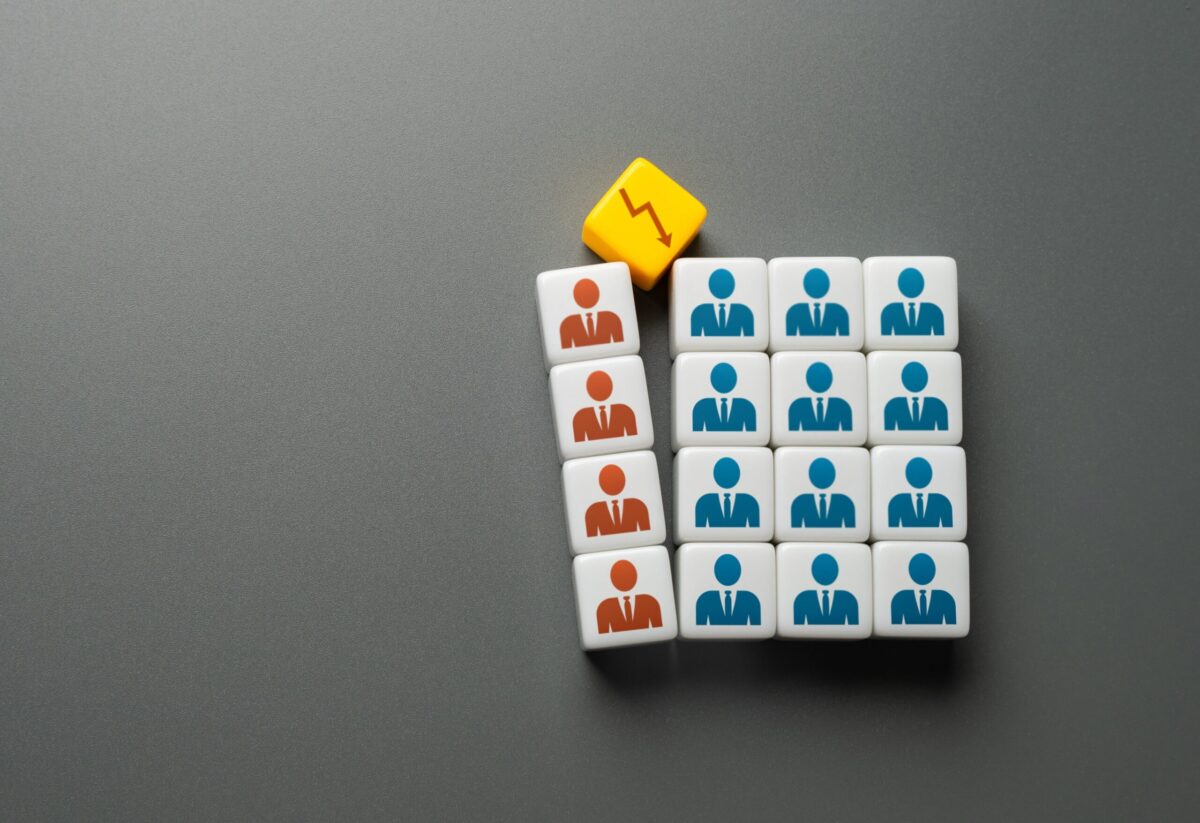Attention-deficit/hyperactivity disorder (ADHD) is among the most common childhood neurobehavioral mental health disorders.
Characterized by persistent problems that can include difficulty paying attention, hyperactivity and impulsive behavior, the disorder affects about five percent of adults and 11 percent of children in the US. Symptoms of ADHD begin in early childhood, but many individuals may not be diagnosed until adulthood.
There are two main classes of medications used to help treat ADHD: stimulants and non-stimulants.
Stimulants versus Non-Stimulants
Stimulants
Stimulants are first-line treatments for children and adults with ADHD. They increase central nervous activity to help treat ADHD symptoms by acting on the prefrontal cortex to enhance its communication with other areas in the brain.
Stimulants have a risk of physical dependence and addiction and are thus deemed to be controlled substances.
Stimulants have been around for several decades and are typically used to treat moderate and severe ADHD to help with focus and overcoming distractions. Overall, they are effective for about 70 to 80 percent of people, including teens and children (some are approved for children over three while others for over six years of age).
There are two to three main classes of stimulants that can be used to treat ADHD: amphetamines (dextro-amphetamine and levo-amphetamine), methamphetamines and methylphenidates (dextro-methylphenidate and levo- methylphenidate). Examples include Adderall (dextroamphetamine and amphetamine) and Ritalin (methylphenidate), which are available in short-acting, intermediate and long-acting versions.
Amphetamines are used in the treatment of adults with ADHD and are thought to work by increasing levels of neurotransmitters like norepinephrine, dopamine and serotonin in the brain. Similarly, methylphenidates, which are used to treat children with ADHD, increase dopamine levels in the brain.
While stimulants are the first choice of medication for ADHD, they have potentially significant side effects such as loss of appetite, weight loss, and issues with sleep and mood. They can also cause cardiovascular problems such as high blood pressure and tachycardia. Stimulants also come with the risk of addiction. The US Food and Drug Administration (FDA) has issued warnings about the risk of abuse of amphetamine stimulants like Adderall, stating that use for “prolonged periods of time may lead to drug dependence and must be avoided.”
Non-Stimulants
Non-stimulant ADHD medications help treat symptoms of the disorder by improving focus and alertness without increasing brain activity like stimulants do. Therefore, unlike stimulants, they don’t have the same risk of addiction and are thus considered uncontrolled substances.
In contrast to stimulants, they don’t have effects on appetite, sleep or mood, nor do they carry the same risk of addiction or abuse. Another advantage of non-stimulants is that their effects are longer lasting and not abrupt like that of stimulants. However, compared with stimulants which are fast-acting, non-stimulants can take up to a week to take effect. This is why it can take longer to determine or adjust dosing of non-stimulant medications.
If high doses of stimulants cannot be tolerated, especially by children, a lower dose can be combined with a non-stimulant to achieve the desired effect.
There are different types of non-stimulant ADHD medications, which include ADHD-specific non-stimulants, antidepressants, blood pressure medications, wakefulness-promoting medication and anti-viral medication among others.
FDA-approved ADHD-specific non-stimulants are a relatively newer class of medication designed to treat ADHD that have much fewer side effects than stimulants. They work by increasing levels of the neurotransmitter norepinephrine in the brain, which is believed to increase attention span and reduce hyperactivity and impulsive behavior.
Eli Lilly’s Straterra (atomoxetrine) was the first ADHD-specific non stimulant to be approved by the FDA in 2002 for the treatment of ADHD symptoms in adults and children over the age of six.
Straterra is the most common non-stimulant and can be prescribed with other medications. The first generic versions of Strattera were approved in 2017 when the drug went off patent.
It then took almost 20 years for another one like it to be approved — Supernus Pharmaceuticals’ Qelbree (extended-release viloxazine), which was first approved in 2021 for the treatment of ADHD in children between six and 17 years of age. The following year, the 18 years of age and older.
The only other approved non-stimulants are the alpha-2 agonists Intuniv (guanfacine) and Kapvay (clonidine).
Below are details about the non-stimulants Strattera and Qelbree, including how they measure up against each other.
Qelbree Versus Strattera
Active Ingredient(s)
Both Strattera and Qelbree are selective norepinephrine reuptake inhibitors (SNRI).
Strattera’s active ingredient is the SNRI atomoxetine hydrochloride while Qelbree contains viloxazine hydrochloride, a serotonin-norepinephrine modulating agent (also a SNRI).
Mechanism of Action
Both Qelbree and Strattera are SNRIs that bind to the norepinephrine transporter to inhibit norepinephrine reuptake.
SNRIs act by increasing the amount of available norepinephrine in the brain. Norepinephrine is a hormone and neurotransmitter that helps in alertness and maintaining control in high-stress situations. It has been found that norepinephrine levels are on average low in individuals with ADHD.
Dosing and Administration of Qelbree versus Strattera
Both Strattera and Qelbree come in capsule form with Qelbree being an extended-release (ER) capsule. Therefore, while Straterra is typically taken once or twice a day (depending on the dose — with a higher dose likely to be given once a day), Qelbree is taken only once a day because it’s released slowly over several hours due to its extended-release formulation.
An important difference between Strattera and Qelbree is that Strattera capsules must be taken whole and not opened. However, Qelbree can be swallowed whole, but the capsule can be opened to sprinkle its contents onto food like applesauce for easier administration — this is particularly useful for children who may have difficulty swallowing pills.
The recommended dose of Qelbree ranges from 200 mg to 600 mg for adults, 200 mg to 400 mg for adolescents 12 to 17 years of age and 100 mg to a maximum of 400 mg for children six to 11 years of age.
Strattera is usually taken once or twice a day. The starting dose for adults and children six years of age and older (and over 70 kg) is 40 mg, which should be maintained for at least seven days before increasing the dose. The dose can be increased up to a maximum of 100 mg.
Effectiveness of Qelbree versus Strattera
As SNRIs with the same mechanism of action, Strattera and Qelbree both work similarly to treat ADHD.
Several studies have shown Strattera’s effectiveness in treating ADHD in children and adolescents. In a study with adult patients, Strattera was most effective when participants took at least 80 mg per day. A greater effect was also observed the longer participants took the medication.
Phase III trials have shown Qelbree’s effectiveness for children, adolescents and adults. Across four trials conducted across the different groups, daily doses of 100 mg and 200 mg for children (six to 11 years of age), 400 mg for adolescents (ages 12 to 17) and flexible-dose regimen for adults led to significant ADHD symptom score reductions within one to two weeks.
There have been no studies that have done a head-to-head comparison of Strattera and Qelbree. Hence, no conclusions can be drawn about which is better in terms of effectiveness, safety and side effects. The effects of the medications may vary from patient to patient, where one may lead to better results over another among some patients.
With its extended-release formula, Qelbree may be a ‘faster’ Strattera. The half-lives of the drugs indicate this difference, as the half-life of Qelbree is about seven hours while that of Strattera is 40 hours (scientists generally believe that drugs with a short half.
Side Effects of Qelbree versus Strattera
As non-stimulants, the side effects of both Strattera and Qelbree are similar and generally mild compared to stimulants. In children, side effects can include nausea, tiredness, dizziness, changes in mood, low appetite and vomiting. In adults, side effects can also include dry mouth, constipation and difficulty urinating.
Cost
The monthly retail price of Strattera ranges from $446 to $558 for 30 capsules (with capsules ranging from 10 mg to 100 mg).
The cost of Qelbree is comparable to Strattera but slightly lower at about $363 for 30 extended-release 200 mg capsules.
With the availability of generic forms of Strattera that are as cheap as $30 for a prescription, atomoxetrine could be preferred over Qelbree cost-wise, especially among patients without insurance.
Qelbree versus Strattera: Revenue and the Non-Stimulants Market
Strattera enjoyed being a big earner for Eli Lilly since its early 2000s approval but that came to an end after the drug went off patent in 2017, with earnings on an expected decline since. In 2017, Strattera’s total revenue was $618.2 million, which was down from $854.7 from the previous year owing to the market entry of Strattera generics in the third quarter of 2017. In 2022, global sales of the drug totalled $115.3 million.
Since its 2021 approval, Qelbree made a significant leap in sales last year due to its expanded approval in adults, having gone from $9.9 million in net product sales in 2021 to $61.3 million in 2022. According to Supernus’ 2022 financials, the company attributed Qelbree’s growth to increases in the average daily dose and prescription size, as well as an expanding prescriber base. The company reported 16,822 prescribers in the fourth quarter of 2022, which was up from 14,265 prescribers from the third quarter of 2022.
It is predicted that the ADHD market is set to reach $16.9 billion by 2028 at a compound annual growth rate (CAGR) of four percent, owing largely to the increasing prevalence of the disorder.
While the ADHD stimulants segment made up nearly 72 percent of revenue share in 2022, the non-stimulant segment is expected to grow with the recent of approval of non-stimulants like Qelbree. There could be a potential rising demand for non-stimulants, particularly for younger children and those that experience significant side effects from stimulants.
This article is not a guide for the safe and effective use of the medications and is not meant to replace consultation with a health care provider. When considering taking Strattera or Qelbree, please review and discuss the comprehensive usage and prescribing information with your doctor or other health care provider.











Join or login to leave a comment
JOIN LOGIN